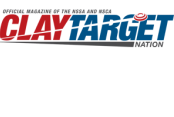Missing Behind
“Thanks for the opportunity to ask you a skeet question: High 2 is my primary problem target. I have tried changing my hold point, my visual pick-up point and my kill point, but I’m still missing behind. Recently, I have tried anticipating by starting my gun at the same time I call pull, but that doesn’t seem to work, either. Help please.”
There are a number of issues that might be plaguing you. While 300 words won’t do your question justice, I’ll do my best. The answer likely lies in one of four causes: 1) eye dominance, assuming you are a right-handed shooter, 2) visual pick-up point that is too close to the high house, 3) poor start, 4) poor hold point.
High 2 is a common problem target for any right-handed shooter who is experiencing some center ocular drift (the left eye is taking over). This can usually be remedied by either retraining your subconscious sight picture or by using a dot on the left lens to occlude the muzzle from the left eye when the gun is fully mounted.
Another common cause of a high 2 problem is that your visual pick-up point might be too close to the high house. While all skeet targets move at the same speed, high 2 and low 6 appear faster to the eyes and brain because they are quartering targets. In your ready position for high 2 and low 6, position your eyes four inches off the muzzle toward the house window. This allows the target to merge nicely with the eyes, making for a controlled move to the break point. Your hold point for both high 2 and low 6 should be straight out from the inside corner of the shooting position, closest to station 3. Under no condition should you try to anticipate the launch of the target. Initiate your move when you “see the blur” with your peripheral vision as the target emerges from the trap house.
Don Currie is NSCA’s Chief Instructor, an Orvis Wingshooting School instructor, and Master Class competitor. To get free shooting tips and videos, sign up for his monthly newsletter. You can also see more tips from Currie at www.doncurrie.com.

